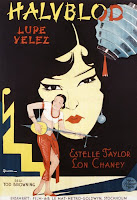Immensely likable pre-Western Americana (early 1800s/east-of-the-Missouri MidWest) sees fresh-faced William Holden as a young widower with a modest farm and a 10-yr-old boy to raise. Needing a helpmate, he buys out indentured worker Loretta Young, marrying her for the sake of propriety. A comely if lean gal of 25, Holden only sees her as a servant; the boy sees an interloper. But with the annual Spring return of hunter pal Robert Mitchum, family dynamics are altered. Mitchum’s instantly attracted and Holden finally notices what’s been under his nose. Bring on the romantic rivalry. With musical courtship for the strong voiced Mitchum, a slow warm-up from young Gary Gray and gruff appreciation/affection out of Holden, all that’s needed to put new interpersonal relationships to the test is an Indian attack. Young, playing ten years younger sans makeup*, and just Oscar’d for THE FARMER’S DAUGHTER/’47, earns the prerogative of having two hunky guys five years her junior fight over her. With underrated director Norman Foster keeping his powder dry on Waldo Salt’s well structured adaptation of a Howard Fast story. (The latter two soon to be Hollywood BlackListed.) A real charmer, right to the finish.
DOUBLE-BILL/LINK Young must have liked working with Foster (now best known for the MR. MOTO mysteries), having him direct 40 episodes of her various tv shows. Two years on, Foster made a lesser slice of Americana, this time letting Holden do the singing (well, lip-synch singing) in FATHER IS A BACHELOR/’50. The same year he made what is probably his best film, WOMAN ON THE RUN. https://maksquibs.blogspot.com/2012/01/father-is-bachelor-1950.html https://maksquibs.blogspot.com/2019/12/woman-on-run-1950.html
SCREWY THOUGHT OF THE DAY: *With FARMER’S DAUGHTER just before and then a nun in COME TO THE STABLE/’49, Young was using less makeup than any Hollywood star at the time not named Ingrid Bergman.

































